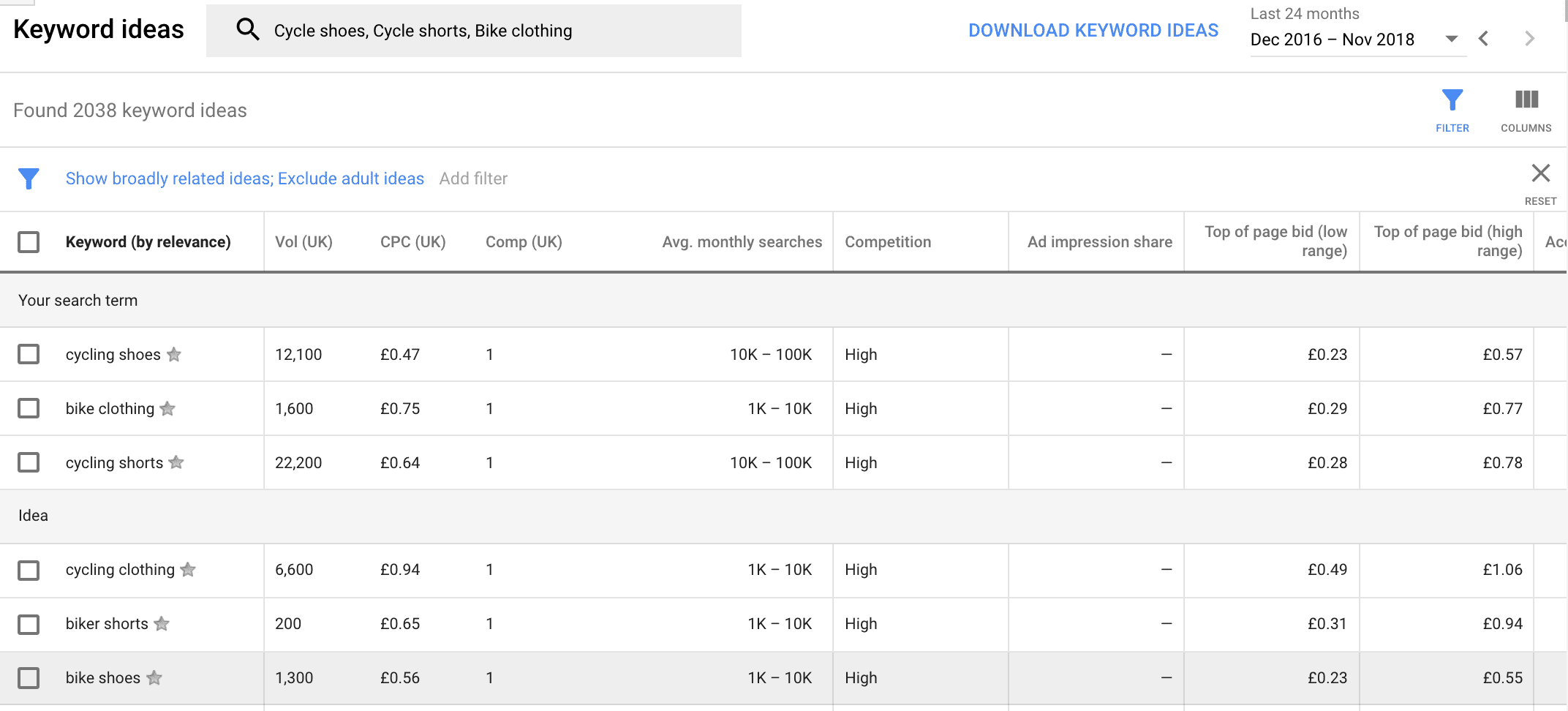A three-step process for brainstorming, collecting and refining your keyword list
Whether you’re putting together a pitch proposal, preparing for an interview or working on a comprehensive SEO strategy, keyword research enables you to develop a clear understanding of what people are really searching for online. It’s a simple yet fundamental task that serves as the foundation for any small or complex project.
Effective keyword research removes the guesswork and provides a level of objectivity based on real user behaviour. I’ve often been confronted with requests to use certain words or phrases because they seem right or align neatly with a particular brand positioning. But when we’re creating content that we want to surface in search, we must mirror the language of our customers.
As search engines have evolved, so has keyword research. While there are many great guides and articles available online, some can be quite detailed and complex, so I want to outline a simple, straightforward three-step process that outlines the core elements of keyword research. For each stage, I have made suggestions regarding the tools, techniques and people required to get the most out of the process.
Brainstorm themes
Objective: Brainstorm and capture initial ideas and themes
Tools: Meeting room; whiteboard; brainstorming tools
People: Digital colleagues; digital agency; clients and senior stakeholders (e.g. MD/ CEO, Head of Marketing)
The first step is to capture ideas and themes that articulate what your brand is about from the perspective of different stakeholders. Consider what type of ‘buckets’ your products and/or services fall into. In addition to what you sell, what else do you want to promote and be known for, e.g. a mission statement or charitable cause?
At this early stage, I often find it useful to get away from the computer and to meet up with people in person to capture their thoughts. The priority here is to brainstorm themes and not to worry about specific keywords or phrases – this will come later once we know more about our keyword ‘territory’.
During the brainstorming stage you will naturally discover how different words and phrases can be grouped by theme and persona.

Once you’ve completed the initial brainstorm, rationalize the ideas into a manageable list of approximately five to ten themes. These will be your target themes to take into the next stage where you will generate a long list of potential keywords. The Really Cool Bike Company this could include:
- Bicycles
- Bicycle clothing
- Bicycle components
- Bicycle maintenance
- Bicycle accessories
Generate keywords
Objective: Build out a master list of all relevant keywords
Tools: Excel; free search tools (Google Keyword Planner, KeywordTool.io); paid search tools (Moz, SEMRush)
People: Digital colleagues; digital agency
The next step is to gather the words and phrases that people are using to discover your brand, products and services online. The summary of themes from the previous stage will be used as a starting point for researching keywords in more detail.
Select your toolkit
For this stage, you will need to use two or three keyword research tools. Paid tools generally provide more detail and search volume accuracy but, depending on your budget, there are also some very useful free tools. I tend to use a variety of different tools depending on the project but they’re usually a combination of the following:
Generate ideas
Using your main themes and topics from step one, identify possible ‘seed’ keywords that you think people will realistically use to search. For example, you might decide on the following keywords for the theme ‘Bicycle clothing’:
- Bike clothing
- Cycle fashion
- Cycle shorts
- Bike waterproof
- Cycle shoes
Take these keywords and plug them into your keyword research tool and review the results.

At this point, it’s also worth looking at Google Search Console (GSC) to get an indication of what keywords searchers are already using to find your website.
This won’t be a definitive list but it can provide guidance as you continue to research related search terms and build up your master list.
Competitors will also provide a rich source of inspiration and ideas. Search for some of the top terms and see who’s ranking.

Take a look at their main pages and evaluate what keywords and phrases they are using within the page content and metadata. I use the free MozBar Chrome extension to quickly highlight on-page elements.

Double-check search volume
The final stage in this part of the process is to add search volume for all of your keywords. While the search volume will never be exact, this is important ahead of the next stage (grouping and filtering) in order to prioritize keywords.
You may find that some of the free tools provide restricted, limited or no search volume. Some paid tools, including Moz and SEMRush, provide free trials and I would recommend taking advantage of these to build on what you’ve discovered so far and to double-check search volume.
If you’re using the Google Keyword Planner, you’ll notice that the tool only provides average monthly search ranges, which is not particularly helpful.

However, if you install the Keywords Everywhere Chrome/Firefox extension you can see more detailed search volumes for all of the keywords.

Armed with this data you should now have a simple, two-column list outlining all of your keywords and associated search volume.

Group and filter
Objective: Define keyword priority to inform content development
Tools: Excel; Google Trends
People: Digital colleagues; digital agency
At this point, you’ll have a long list of keywords and search volumes. The final step is to group and filter these keywords into an actionable list to help identify the core areas of focus. The main categories are as follows:
Brand terms
Popular terms that relate specifically to your brand and product/ service names, e.g. ‘the really cool bike co’; ‘really cool bike jackets’.
Primary terms
High-volume, popular terms that are likely to be your main focus and will influence the main content themes.
Secondary terms
Phrases with two to three keywords that are related to the primary term and will likely be a category or sub-category not related to a product.
Content-led terms
Phrases with three or more terms that are not directly related to your products/ services but could be used to create content in your area of expertise, e.g. ‘local bike routes’; ‘cycling routes in Devon’.
In addition to the categories above, you should also consider the intent behind each of the terms. Keywords and related content should reflect different stages of the customer journey.

Using these categories and information, you can build on your initial master list.

Next steps
Following further analysis of your keywords, you’ll eventually have a robust, actionable list. The next step is to develop a holistic keyword strategy that will outline how and where keywords and phrases will be used to create and refine content across your site.
Creating a keyword strategy is another blog post in itself but ultimately you’ll be looking to map keywords to current pages and run a gap analysis to decide whether you need to:
- Create new content where there are no pages that effectively meet the searcher intent for your keyword
- Optimize existing pages to improve current ranking

